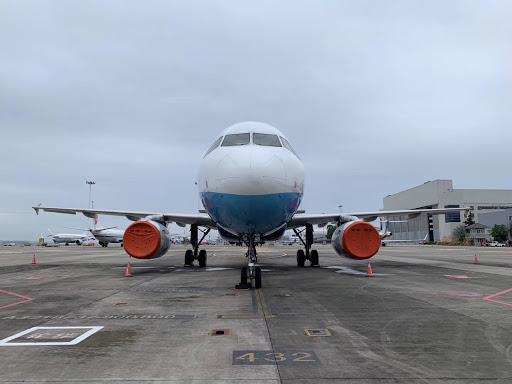
The 2019 novel coronavirus, or Covid-19, started in China, and Chinese MROs were the first aftermarket entities to be hit by its consequences. But at least one of these MROs says it is well underway to full recovery of maintenance capacity, even if local demand will flag for a while.
Hangxin Aviation Services’ MRO facilities resumed work on Feb. 10. “As of this week, Hangxin's maintenance capacity has recovered by more than 90%,” said General Manager Zhou Zhenjun on Feb. 26.
However, Zhou noted that there are signs of a decline in business of Hangxin’s airline customers. “As we all know, most airlines have significantly reduced their flights.”
Hangxin’s local government has a series of requirements for dealing with the coronavirus. The MRO has installed measures that meet these requirements.
The Hangxin exec said a small number of his employees in Hubei Province, in which the virus first spread from Wuhan City, are still under observation, and these employees cannot return to the company temporarily.
In order to adapt to the current situation and workload, the company has implemented a series of employee training and performance assessment programs to minimize the impact on employees.
Fortunately Hangxin is well diversified geographically, with facilities in Guangzhou and Zhuhai, both in Guangdong Province, Shanghai, Hong Kong, Tianjin, Ha’erbin in Heilongjiang Province, and at Magnetic MRO in Estonia.
On access to parts and logistics, Zhou said the import and export business in Guangdong Province and the city of Shanghai has basically returned to normal. “We did not see any impact on us in this respect.”
Due to the reduction in Chinese air travel, Hangxin managers expect their ad-hoc MRO business will inevitably decrease. “But the overseas business, which accounts for more than half of our revenue, still keeps a good growth momentum,” Zhou said. “And some long-term service agreements will also keep normal levels.”
The Chinese MRO has been lucky to recover operations so quickly. Chinese factories were supposed to resume operations on Feb. 9, but on Feb. 16, logisticians at Kuehne + Nagel said Chinese companies and factories were gradually resuming work, but the pace varied among provinces.
Hubei province was still locked down at the end of February. And even companies that had been approved for reopening were mostly operating at 10-50% of capacity, due to a 14-day quarantine for travelers returning from other provinces and workers still unable to return from other provinces.
K+N reported all key Chinese ports were operating, but less efficiently due to limited workforces. “The ports of Shanghai, Tianjin and Ningbo remain congested due to yard density at critical levels and ongoing shortage of reefer plugs at the terminals of these ports. Loading and discharging operations slowed down due to lack of stevedores. Wuhan port remains closed until further notice.”
All airports on the China mainland and in Hong Kong are operational except for Wuhan, which is closed to passenger flights and receives only relief missions.





